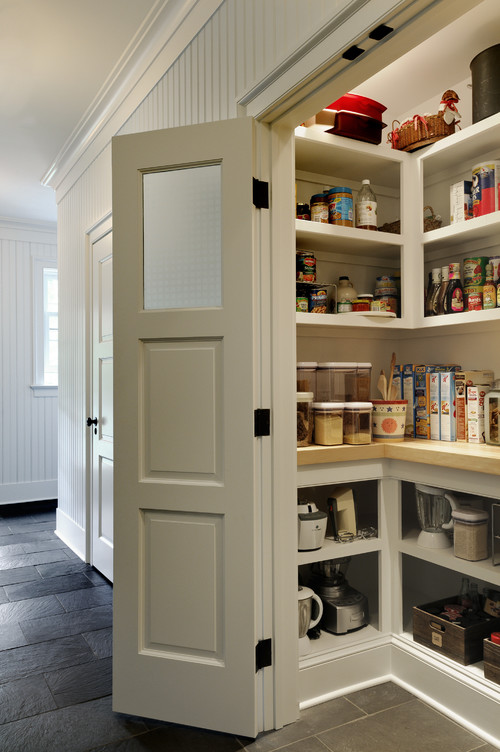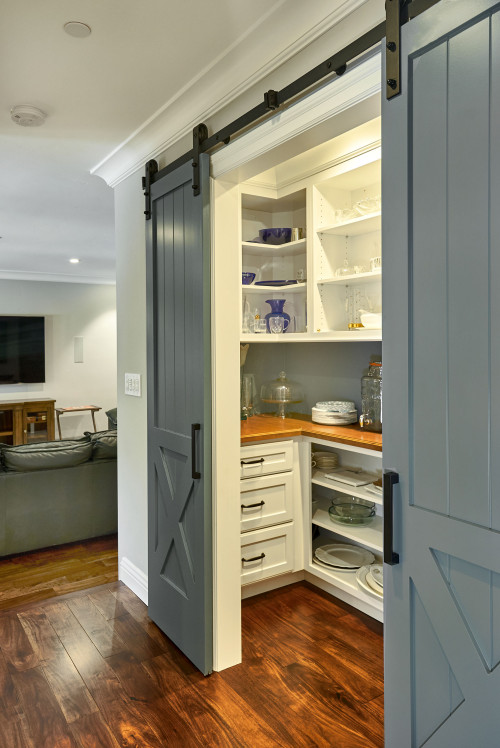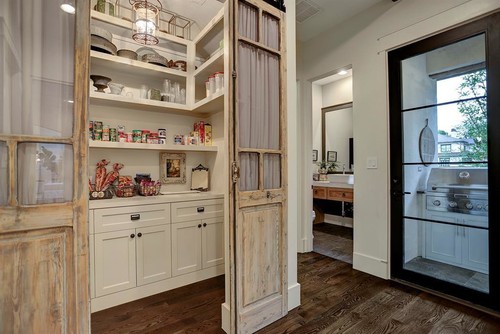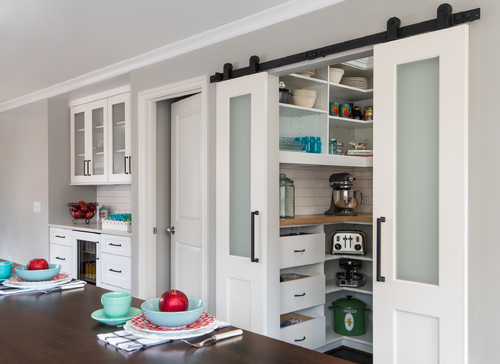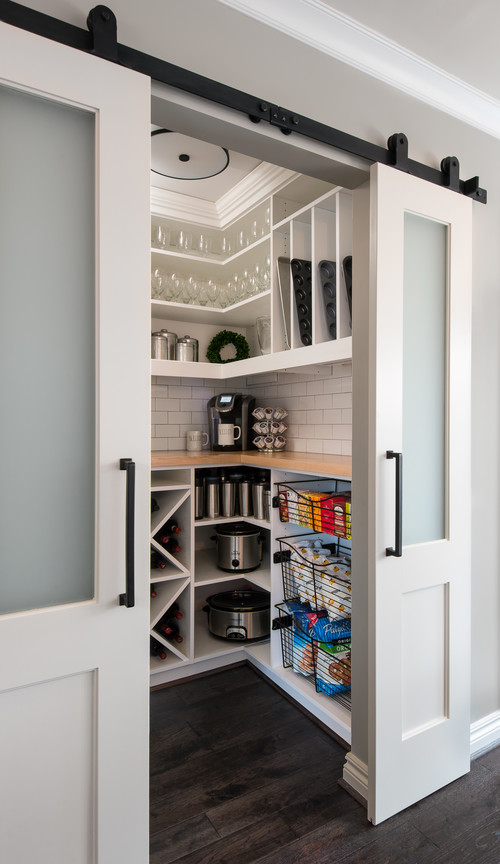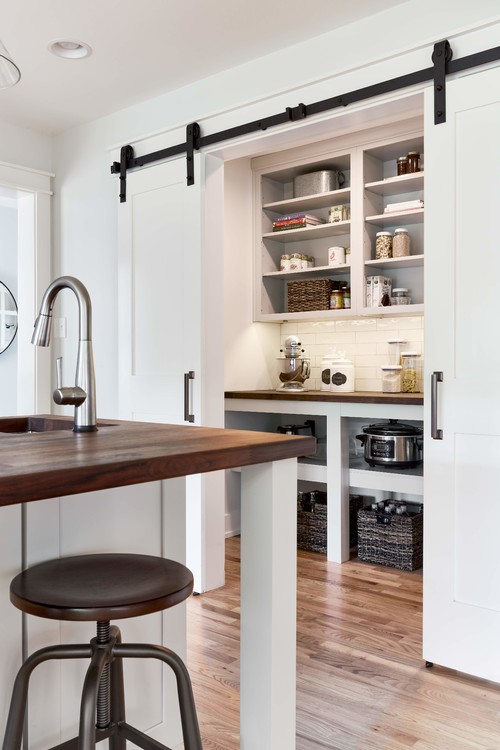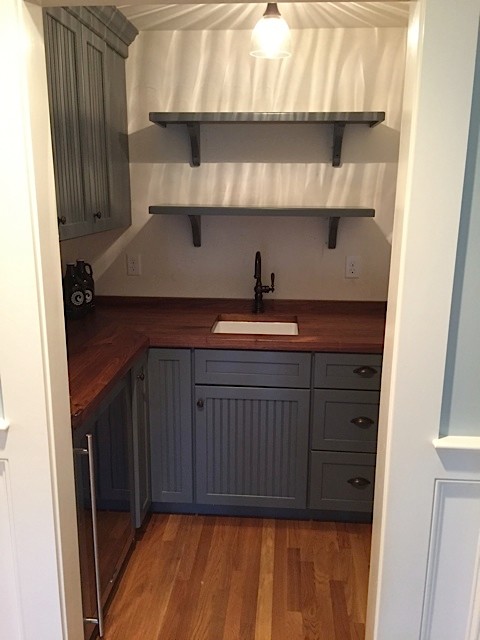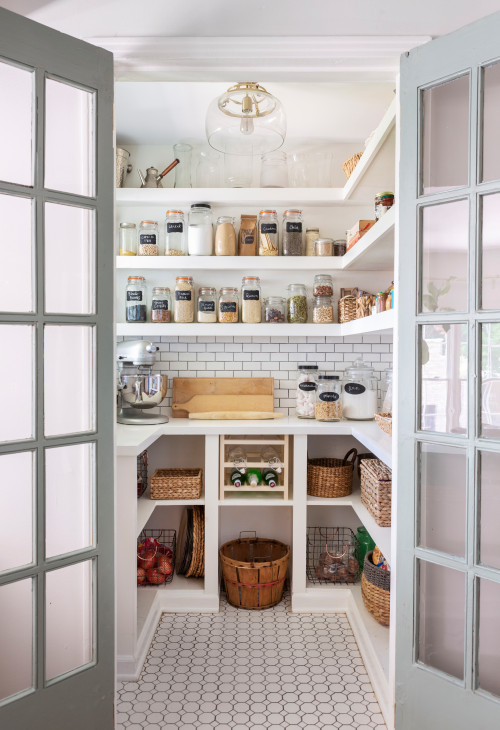The Best Fluffy Pancakes recipe you will fall in love with. Full of tips and tricks to help you make the best pancakes.

Let’s face it—open-concept kitchens are gorgeous, but they can also feel a little… exposed. Floating shelves are fun until you have a half-eaten bag of rice and no aesthetic way to store it. This is where pantry nooks swoop in to save the day: blending charm with serious functionality, offering a space where style meets storage behind a whisper of a door or tucked into a cozy corner.
Table of Contents
What is a Pantry Nook?
A pantry nook has a counter, it may or may not include cabinets, and often serves as both storage and workspace. It usually has a wide entrance; if doors are used they are often double doors. The depth is shallow and is just deep enough to step into, with an average depth of three feet (but can go slightly beyond that). Overall, it is a small footprint and not a full room to maneuver in.
Pantry nooks can also be referred to as “step-in pantries” or “side pantries.” Pantry nooks can also function as a dedicated scullery space for washing dishes, or baking centers.
Many pantry nooks may suspiciously look like remodeled closets – and you’re right! Homeowners desperate for a little more pantry storage may have converted closet space to pantry space.
Pantry nooks might be:
- A recessed niche with shelving and barn doors
- A pocket-style cabinet within a cabinetry wall
- A standalone alcove built near the fridge or oven
- A converted closet or armoire turned food haven
The magic of the pantry nook lies in its flexibility—it’s just enough space to give you what you need, without overwhelming your kitchen footprint.
However, more pantry rooms and pantry nooks are being intentionally built into new homes to counteract the “open concept design.” Homeowners want the option to hide messes at times with doors and to have divided work zones separate from the main kitchen.
Open shelving, even in base cabinets, is what makes pantry nooks “all business” and the emphasis on the practical. The pantry nook doors are an opportunity to add additonal style to the kitchen design.
The popularity of pantry barn doors extends to pantry nooks.
How to Incorporate a Pantry Nook Into Any Kitchen Layout
No matter what kind of kitchen you’re working with, there’s a pantry nook solution for you.
👩🍳 If You’re Remodeling…
- Add a recessed nook between wall studs for a shallow but effective storage niche.
- Use tall pull-out cabinets on either side of the fridge to create an integrated pantry zone.
- Tuck a pantry nook into a hallway alcove or corner just off the kitchen with coordinated cabinetry and lighting.
🏠 If You’re Designing New…
- Plan for a pantry closet or pantry “cubicle” near the prep triangle—close to fridge, sink, and cooktop.
- Frame your nook with archways or a sliding door to make it a design moment.
- Include outlets in your pantry nook if you want to keep appliances like toasters or blenders hidden but handy.
🛋️ If You’re Updating Without Renovation…
- Convert a bookshelf or shallow cabinet into a pantry nook with added bins and labels.
- Use a freestanding armoire or antique cupboard painted to match your kitchen as a pantry hub.
- Hang a curtain, beadboard door, or sliding panel over open shelves to define the space.
This homeowner upcycled antique doors with glass panes to add a unique touch to this pantry nook. The creamy interior blends nicely with the doors.
Small appliances are ideal homes in pantry nooks. Shallow corners are perfect for easily fitting things like mixers, toasters, and large pots. Pantry nooks are an opportunity to spend a little extra money on floor, wall, and ceiling furnishings, since it’s such a small spot. Note the subway tile in the backsplash.
This is the reverse view of the pantry nook above. From this view it may qualify for a “small pantry room.” What is a pantry “nook” and a “small room” is subjective.
Another pantry nook with a pocket door. Note the sparkling chandelier – have fun with your pantry nook!
Pantry nooks make excellent baking centers, sometimes even having their own sinks. Small appliances that would take up counter space in the main kitchen find a happy home in a pantry nook – and still easy to retrieve when you need it.
This appears to be a square pantry nook, but it could extend further to the right than we actually see. Some homeowners want a “pretty” entrance for guests to see, and then duck around the corner to retrieve food from shelves that are out of site.
There is just something about mystery when glass doors are used in a kitchen. All of the food has been decanted and labeled, making this a “display” or “show” kitchen. Never discount the added decor punch a pantry nook can add to a home.
In Conclusion
Incorporating a pantry nook into your kitchen isn’t just about finding a place to put your pasta. It’s about building a system that supports how you live, eat, and move through your space. It helps you make sustainable choices, minimize visual clutter, and elevate everyday moments—like making coffee or grabbing oatmeal—into peaceful rituals.


